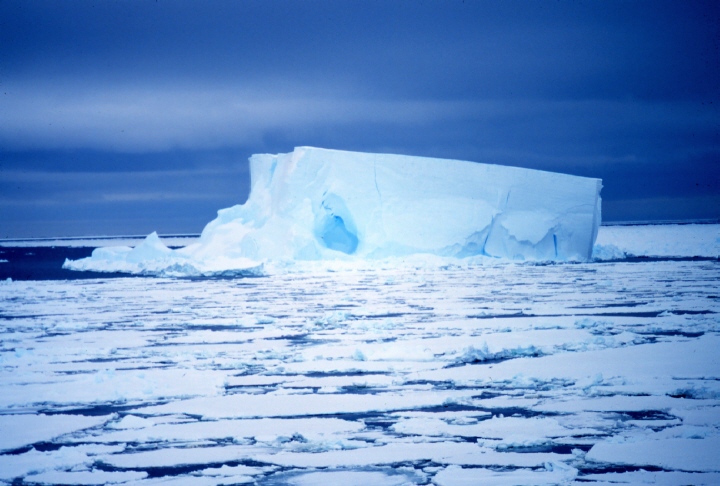THE RISING SEA
A One-Hour HDTV Special
Part of The Dynamic Earth Project

CLICK ON THIS IMAGE TO SEE A SPECIAL PREVIEW VIDEO CLIP
Requires Windows Media Player
Download Windows Media Player for Apple Here
Download Windows Media Player for PCs Here
CHANGE IS EVERYWHERE
The stakes are rising in the debate over climate change, fueled by rapidly retreating glaciers around the world, a record freeze in Europe, punishing droughts across Africa and lethal storms in the tropics. Scientists are increasingly concerned about the behavior of the oceans. In the new age of global warming, will the seas begin to rise up with increasing ferocity? And who will pay the grim price?
This much is clear our relationship to the sea is changing quickly. As coastlines around the world steadily gain in population, we are becoming more and more vulnerable to natural disasters from tsunamis to hurricanes and rising sea levels.
The Rising Sea, a special one-hour HDTV program, will explore efforts to probe the gathering forces of climate change using sophisticated supercomputer simulations. In a series of eye-popping visualizations and satellite data-based sequences, audiences will see the dynamism of our planet and the profound effect humans are having on it.
These powerful new analytical tools are part of a revolution in the Earth Sciences. Scientists are drawing upon a flood of data from satellite monitoring systems and sprawling new undersea sensor networks. They are shedding new light on the complex feedback mechanisms between our oceans and our atmosphere, to unlock vital clues in our race to prepare for the coming changes before it's too late.
DRAMATIC PREDICTIONS
The public already knows that rapid climate change suggests some frightening possibilities. Canada's Inuit are seeing it in the disappearing Arctic icepack and vanishing caribou, and melting permafrost that's breaking up roadways and building foundations. The shantytown dwellers of Latin America and Southern Asia are experiencing it in lethal storms and floods. From Africa to China people are watching helplessly as deserts expand across once fertile farmlands. And Europeans are increasingly enduring fatal summer heat waves and deep-freezing winters.
With the scientists' computer simulations acting like crystal balls, The Rising Sea will explore the assumptions they are using to arrive at their predictions about large scale Earth systems the cycles of freezing and thawing of polar ice, the consequences of rising CO2 levels in our atmosphere, the wide-reaching effects of ocean currents and water temperature, and the influences of weather systems and vegetation and even man himself.
Here are just a few of the more dramatic computer predictions that we may explore:
- A simulation by the National Center for Atmospheric Research showing that ocean levels will rise significantly due to thermal expansion, and how circulation from the tropics through the North Atlantic, with its moderating effects on Europe, may significantly weaken within the coming decades.
- A major NASA climate model predicting that the perennial Arctic sea ice may be gone by the end of the century, the consequences of which may be impossible to accurately assess.
- A simulation from the British Meteorological Office predicting that Greenland's ice cover may disappear in the next two centuries, raising sea levels by an astonishing six meters, enough to flood land presently occupied by billions of people.
- A simulation by NOAA's Geophysical Fluid Dynamics Lab predicting that the strength of tropical storms could increase by 10% in the next half century, wreaking havoc on coastal regions around the world.
While there is still great uncertainty about the scale and speed of climate change, the scientists who are developing these simulations are becoming increasingly convinced that it may be unstoppable, and that its effects will be widespread, catastrophic, and unexpected.
THE PROJECT
The Rising Sea is part of a larger suite of media projects, entitled The Dynamic Earth Project, that includes a 25-minute full-dome digital planetarium show, tentatively titled Sphere of Life, and other associated web-enabled multimedia projects dealing with the latest advances in global Earth sciences. Taken together, they encompass one of the largest Earth Science visualization projects ever undertaken.
This never before seen imagery will be the result of a highly collaborative effort to mine the archives of NASA satellite data and employ the full capabilities of the National Center for Supercomputing Applications (NCSA)/U. of Illinois at Urbana-Champaign, plus state-of-the-art oceanographic computer simulations from the Scripps Institution Of Oceanography.
PROJECT SUPPORT
The Project has been awarded a grant from NASA to conduct preliminary visualization studies and general planning. The Project is also being supported by the assignment of dedicated personnel within NASA's Scientific Visualization Studio (SVS).
THE PRODUCTION TEAM
The Dynamic Earth Project is the latest collaboration between Thomas Lucas Productions, Inc. and a team of visualization specialists at The National Center for Supercomputing Applications (NCSA), led by Donna Cox. This partnership has pioneered the use of observational and simulated data sets to produce dramatic and scientifically credible depictions of natural phenomena.
The team is currently working with NOVA on a program about black holes titled "Monster of the Milky Way," along with a full-dome digital planetarium show titled "Black Holes: the Other Side of Infinity." These projects are being produced with funding from NASA and the National Science Foundation.
The team's other joint credits include the award-winning NOVA/BBC program on tornadoes, "Hunt for the Supertwister." Previously, they worked together on NOVA/ "Runaway Universe," PBS/ "Beyond Human: The New Age of Cyborgs and Androids," and DISCOVERY/ "Unfolding Universe." The NCSA, under Cox's direction, has worked on three additional big screen productions, the IMAX film "Cosmic Voyage" and the Hayden Planetarium productions "Passport to the Universe" and "The Search for Life."
THE COLLABORATORS
California Institute for Telecommunications and Information Technology- Cal-(IT)2
Environmental Media Fund
NASA Distributed Active Archive Centers Alliance
NASA's Scientific Visualization Studio
National Center for Supercomputing Applications (NCSA)/U. of Illinois at Urbana-Champaign
Scripps Institution of Oceanography